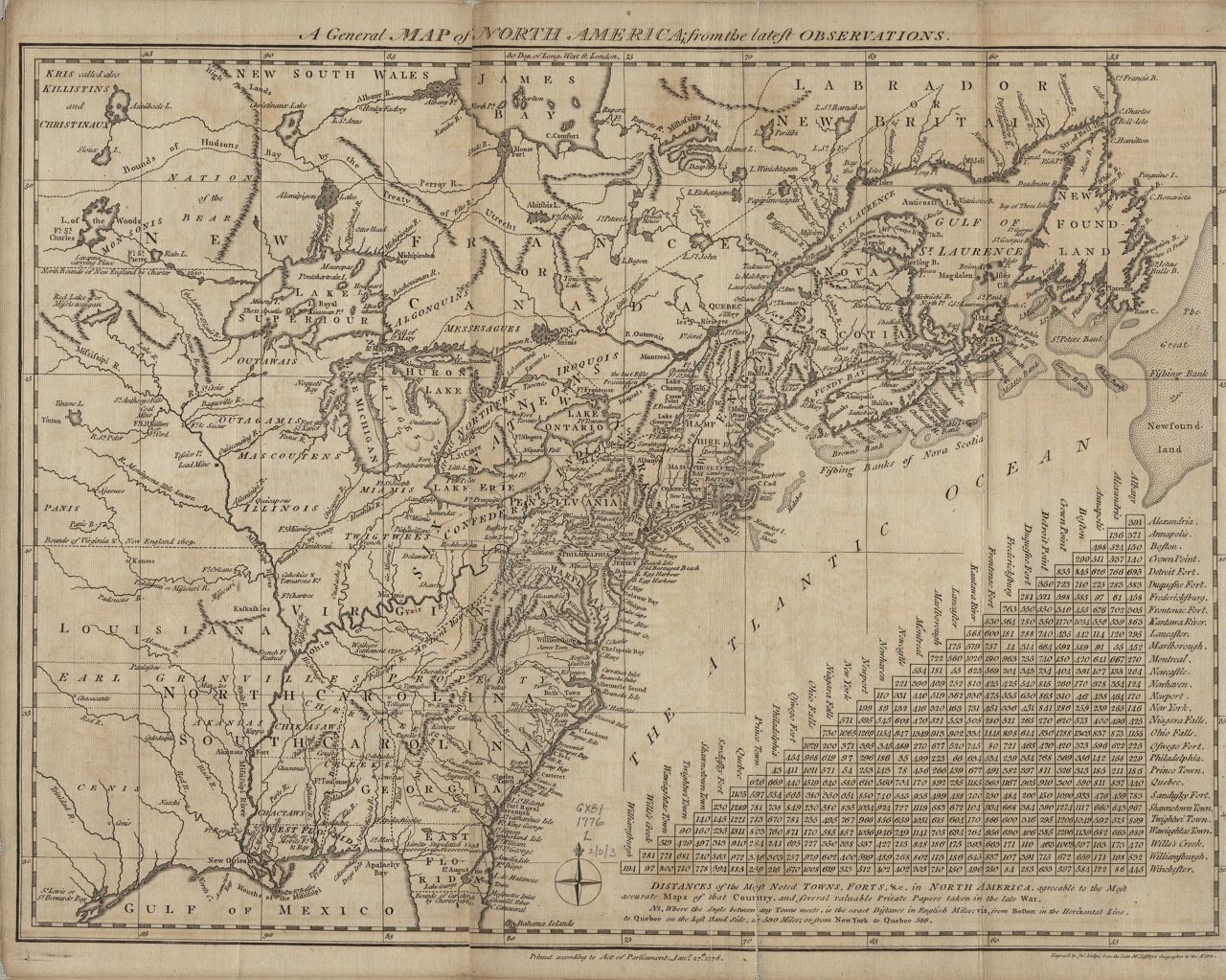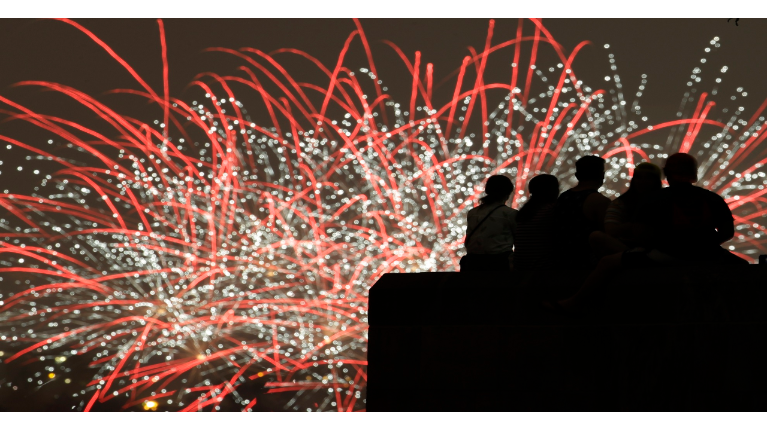WISCONSIN (SPECTRUM NEWS) -- This weekend, Wisconsinites will join the rest of America in remembering that fateful Fourth of July when the colonies first declared their freedom. But for the people of that era living in Wisconsin — or really, the area that would later become Wisconsin — the Revolutionary War remained a far-off conflict, and its principles took on their own meaning.
“These people have their own clear sense of fighting for their own independence,” says Kristen Foster, an associate professor of history at Marquette University. “To me what's most striking about this region in that period is that they're really, in some ways, trying to do the same thing. But for very different reasons, and against a very different enemy.”
Wisconsin wasn’t one of the 13 colonies proclaimed as “Free and Independent States” in that iconic Declaration. In fact, “the rebellion against the Crown that erupted in 1775 in British North America found little support in the western wilderness,” according to historian Alice E. Smith’s account of the era. Wisconsin was only handed over to the new United States after the war ended, and even then British settlers stuck around in the area for more than a decade.
So what was going on in the region as the East Coast was gearing up for a revolution? Mostly, a lot of trade, says Stephen Kantrowitz, a history professor at UW-Madison.
“The American Revolution is a distant and, at that moment at least, inconsequential event in most respects,” Kantrowitz says. “Most people's lives are oriented around a world of trade and exchange among Native people, and then the fur trade, which provided goods to French and English traders. But this is a Native world here in 1776.”
At that time, Wisconsin was “a world of many people’s homes and homelands,” he says. Several different tribes had their villages, farms, hunting grounds, and settlements spread out across the future state — including the Ho-Chunk, Menominee, Ojibwe, Potawatomi, Dakota, and Sauk peoples. Kantrowitz describes the lifestyle at the time as “profoundly cosmopolitan,” with many Wisconsinites speaking multiple Native languages and building relationships across cultures.
In the centuries leading up to that first Independence Day, European merchants had also been making their way into Wisconsin and the surrounding Great Lakes region, struggling to control the big business of exporting beaver pelts.

French explorers were the first Europeans to arrive in the area in the 17th century, followed later by British and eventually Scottish traders. In some cases, the arrival of these Europeans marked a shift “between a way of life in harmony with the environment and one based upon the exploitation of a single resource, the fur trade,” historian Robert C. Nesbit writes in his account.
In Europe, the demand for these furs grew “gigantic and inexhaustible,” Kantrowitz says. Mainly French and French-Canadian merchants started setting up outposts across the region, including in what would later become the cities of Green Bay and Milwaukee, Foster adds. European merchants would supply valuable goods and metals in exchange for beaver pelts brought in by Native American trappers.
Historical records describe a lifestyle among the traders that could sometimes be harsh and unforgiving. In a 1702 letter to the Montreal governor, one French Jesuit missionary writes of “an infinite multitude of evil acts — acts of brutality and violence; of injustice and impiety; of lewd and shameless conduct; of contempt and insults.”
“Of course, that kind of rapid influx of wealth also creates competition and conflict,” Kantrowitz says. “So, even though the physical footprint of European traders is pretty small here, and certainly the military footprint is very small in 1776, the economic and the social effect of the fur trade is pretty large.”
Still, Foster emphasizes that these Europeans looking to make a profit remained the “outsiders” in the region, which was dominated by Native American tribes. Even as claims to the land changed hands between countries — with the French first declaring their control based on the Doctrine of Discovery, and the British later taking over that claim after winning the French and Indian War — Native Americans were the ones actually occupying and cultivating most of that land. Some fur traders, particularly the French, worked to understand the indigenous cultures of the area, Foster says, and intermarriage between traders and Native peoples became common.
When 1776 rolled around, then, Britain had claimed ownership of Wisconsin and the rest of the Great Lakes region, but didn’t have much of a settlement there. For a lot of people, the war had little impact on day-to-day life: “No battles were waged on Wisconsin soil,” as Smith writes, and the fur trade continued at a good clip even as the revolution raged on in the East.
Over the course of the war, though, both British and American forces vied for the loyalty of Wisconsin residents. Some Native American warriors from the area went into battle alongside British forces under the command of Charles de Langlade, himself the son of a fur trader father and an Ottawa mother. But others, especially in the southern part of the region, began to ally themselves more with the American rebels in the later years of the war, Foster says.
Though it’s unclear how widely the Declaration of Independence and its ideas spread in the region, Foster says Native Wisconsinites were fighting for their own freedoms.
“It's about the same issue. It's about self-determination and independence, but it's not based on these Enlightenment ideals — it's based on their claim to this region,” Foster says. “They're forced to make these decisions about who's going to best protect or allow them that right to self-determination.”
Of course, in the end, it was the American rebels who emerged victoriously. In the Treaty of Paris that ended the war in 1783, Britain handed the rights to the Northwest Territory — a swath of land that included Wisconsin and its surrounding regions — over to the newly formed United States of America.
Eventually, this transfer would open up this interior region to white Americans, who in the mid-19th century would push farther west and build settlements, Foster says. Wisconsin would officially become the 30th state to join the U.S. in 1848. But for many years after the Revolutionary War came to a close, life for Wisconsinites stayed pretty much the same, Kantrowitz says. The fur trade continued to drive the economy for decades. The British stuck around until later conflicts forced them out. And for many Native Americans, the various claims on their land were still just "fictions," Kantrowitz says.
“The American Revolution, the territorial adjustments that European powers make in relation to each other and to the United States — it's all lines on a map,” he says. “It's got nothing to do with what's actually happening here on the ground for a very long time to come.”



